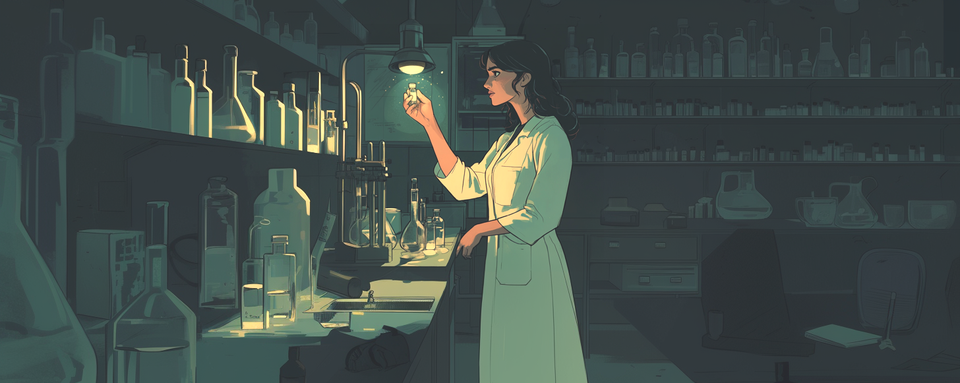We detected 9 new-to-us substances in November 2024, amidst 130 unique substances we saw in the drug supply this month.


desalkylgidazepam
des-al-kyl-gid-az-e-pam
This novel benzo, desalkylgidazepam (PubChem) that is not scheduled. Among the known molecules, it seems most similar to nordiazepam/nordazepam, which is a long-lasting benzo. You can see just the chlorine is substituted with a bromine molecule. There isn't much in the way of human studies on desalkylgidazepam, but we would be looking out for long-acting effects. The index sample, from New York, was expected to be a benzodiazepine, and also contained bromazolam, xylazine, and (dex)medetomidine, but not fentanyl. This particular sample only contained in desalkylgidazepam in trace abundance. CSFRE reported detection in December 2022.
You can see the molecular similarities here:
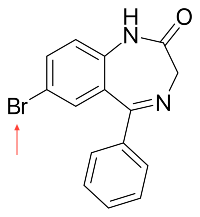
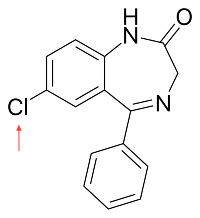
And, you can see Br (bromine) and Cl (chlorine) are adjacent in the column known as halogens. This is generally a sign that effects may be similar when substituted for one another. For example, sodium chloride (NaCl) is regular table salt, whereas and sodium bromide (NaBr) is the active ingredient in the old school headache and antacid Bromo-Seltzer.
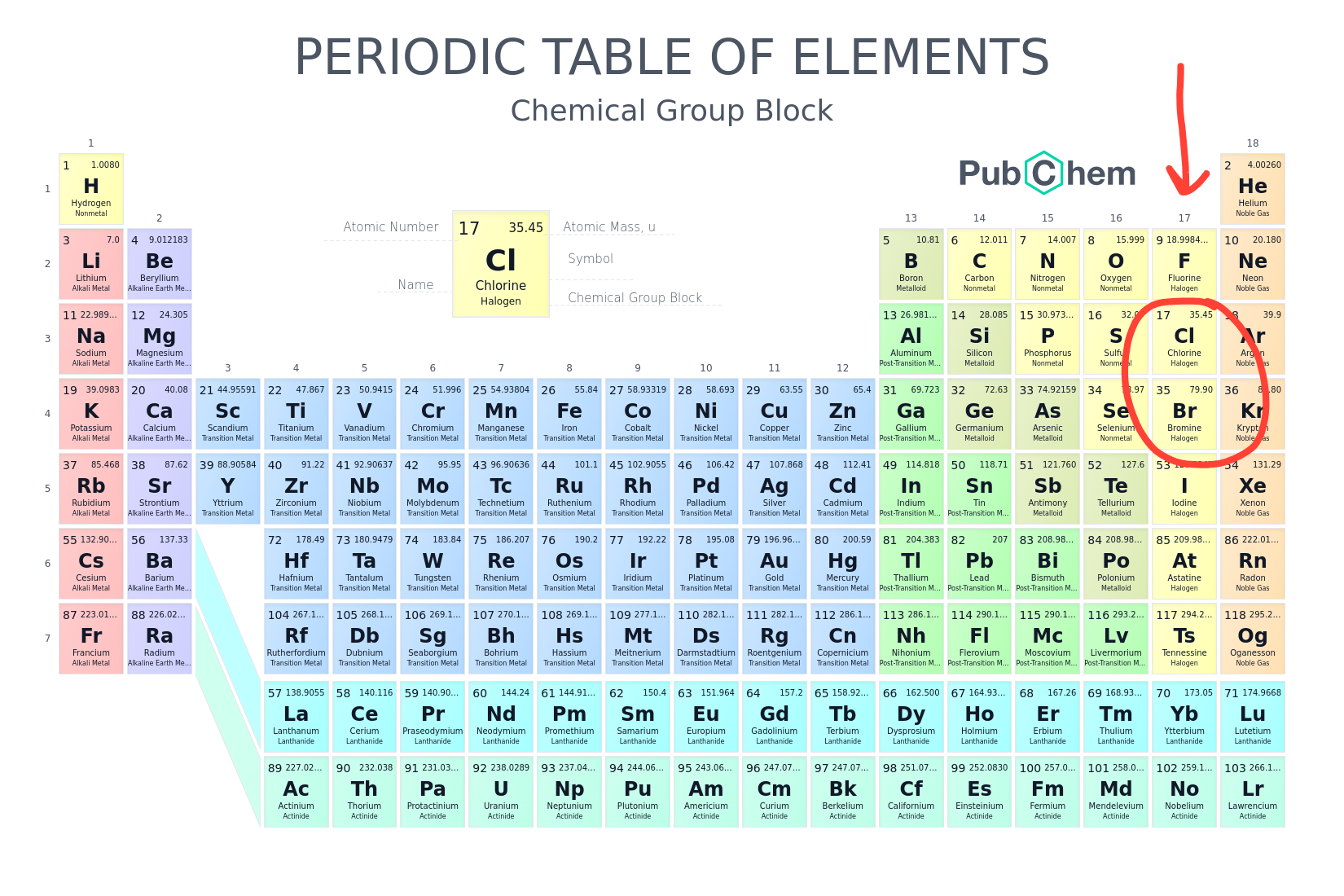
For the sake of completeness, it's worth nothing that desalkylgidazepam is the downstream active metabolite of the prodrug gidazepam/hydazepam (PubChem).
A substance that gets unpackaged and activated (metabolized) inside your body, kinda like a security tag getting taken off to activate a gadget. Enzymes from the liver are usually responsible for the unpacking and activation. Classic examples include codeine as a prodrug of morphine, and lisdexamfetamine becoming d-amphetamine.
desalkylquazepam
Another novel benzodiazepine in trace abundance, with minimal human information. CSFRE picked this up in May 2024 in a solid drug sample via the Canton-Stark County Crime Lab in Ohio. Our index sample came from Michigan, collected at the end of October. That particular sample was an outlier, containing 19 (nineteen) unique substances, including cannabinoids, a nitazene, heroin, fentanyl and analogue, xylazine, and OTC medications. The dealkylquazepam was only detected in trace abundance.
You can see dealkylquazepam (PubChem) has a family resemblance to desalkylgidazepam and nordiazepam above, but the addition of sulfur and fluorine in different positions is certain to change how it acts in the human body, relative to the two benzos described above. But that means it should be easier to distinguish on FTIR and mass spec. You can see sulfur (S) below oxygen (O) in the Periodic Table, again placing them in the same vertical chemical family. Walking down the columns of the Periodic Table is a classic way for new drugs to be synthesized by the pharmaceutical industry and clandestine manufacture. Nothing surprising here.
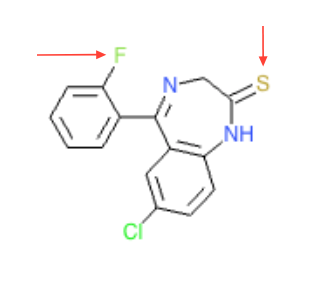
At this point, we aren't drawing a connecting line between these two "desalkyl..." new-to-us benzodiazepines. It may just be coincidence that we saw them in the same month, albeit in different US states. But in general, we expect novel benzos to continue diversifying.
ethyl 4-anilinopiperidine-1-carboxylate
A known fentanyl precursor. DEA noticed it and made it a controlled substance in 2020, and it was identified in British Columbia, Canada in July 2023. The usual cat and mouse game. The index sample was mostly caffeine, lidocaine, and diphenhydramine.
deoxymethoxetamine
Deoxymethoxetamine is also called DMXE or 3D-MXE (wikipedia). First identification was in Denmark in 2021. No human data at this time, but this chemical simulation in silico study showed that methoxetamine (MXE) derivatives also block NMDA receptors. Not much of a surprise here; MXE is well-known among the psychonauts. In our index sample, deoxymethoxetamine was in trace abundance, and contained 3-HO-PCP and deschloroketamine, with a touch of 2-fluoro-2-oxo-PCE. So a combo probably intended for an experienced user.
brorphine
Oooh, this is an interesting one. Brophine (Wikipedia) is an opioid alternative that was discovered in the 2010s “with the intention of finding safer analgesics that produce less respiratory depression than typical opioids... Its safety profile in any animal model has never been established. Despite the lack of safety information on the compound, brorphine has been sold as a designer drug since mid-2019, initially being identified in the US Midwest, though it has since been found in 2020 in Belgium.”

This sample https://www.streetsafe.supply/results/p/807964 from Michigan contained 17 unique substances, including BTMPS, tylenol, xylazine, fentanyl, metonitazene, bromazolam, benadryl, heroin, and caffeine. A messy brew indeed.
N-cyclohexyl butylone
This is another novel, rare stimulant derived from the khat plant. It is in the class of molecules known as substituted cathinones, which can be identified with the “-ylone” suffix.
DrugsData/Erowid Center saw this in March 2022, and CSFRE picked this up in June 2022, and other labs in August of that year. Energy Control also identified N-cyclohexyl butylone and worked with labs in Spain and the Netherlands to characterize it; computer modeling of predicted effects conducted in the wake of the 2022 emergence suggest effects similar to MDMA.
Samples were submitted by anonymous Spanish users to Energy Control’s drop-in service for their analysis. The format of these samples was the following: two samples were yellow pills with the logo of Snapchat (also containing caffeine), one brown crystal sample was containing also MDMA and finally two were in white crystal form. All of them were acquired as MDMA.
This was expected to be a fentanyl fake M30, and it did contain a trace of fentanyl. But imagine the surprise when you get an upper instead of a downer! Luckily it had not been consumed before it was sent to us; a wise decision and glad folks are trusting their instincts. Our index sample came from the Charlotte, North Carolina area, and was also a yellow pill. Coincidence? We reached out to the site and they reported that the pill was poorly made. And that it did not have indicia; contrast that with the snapchat pill that was sold as XTC.
We reached out to CSFRE, Kykeon and looked at DrugsData.org – none of these major labs reported having seen N-cyclohexyl butylone recently. We are left pondering if our index sample is something emergent or maybe just something old.
We might could rule out leftovers from 2022 because of the presence of BTMPS, but then again it was only in trace abundance. We also note that trace detections from pill samples could also be from handling and contaminated surfaces. For example 1,4-butanediol detection is unusual for a pill (usually liquid), and another sample from the same site at the same time was just 1,4-BD — so its presence in the GCMS detection at a tiny tiny level is very likely contamination by proximity or handling before it came to the lab. No shade y’all, we get that drugs in the real world are messy.
sertraline
This sample was expected to be tusi, in the form of a light pink powder. Sertraline is the anti-depressant Zoloft. The sample also contained the cough medicine guaifenesin (which we see sporadically). And heroin.
Here we speculate: The sample was collected on October 24. We point out that this was just 3 days after The New York Times published their gratuitously alarmist article (pink powder and razor blades!) about "pink cocaine" – which is supposed to be tusi, which is a loose term referring to ketamine + meth + MDMA mixes in the nightlife scene. And we note that Robitussin often contains guaifenesin. This is pure coincidence, right? Right?
We've pointed out that news reporting volume about certain drugs can be directly tired to overdose rates ~4 months later. Increases and decreases.
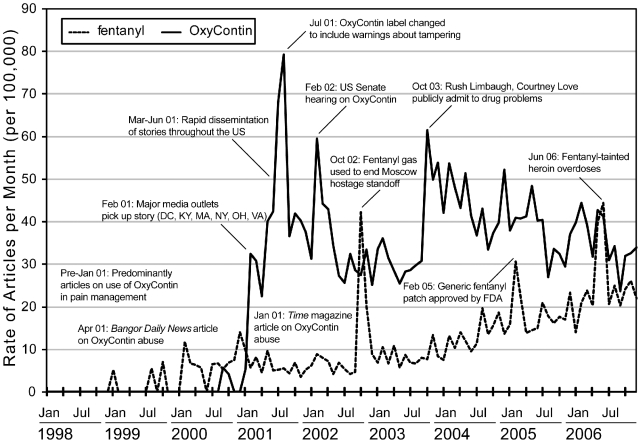
We also note that we routinely see mental health medications in the drug supply: quetiapine (schizophrenia and bipolar disorder), trazodone (anti-depressant), and fluoxetine (anti-depressant).
tryptamine
We know about Foxy and DMT and other "tryptamine psychedelics" or hallucinogens like AMT, 5-MeO-DIPT, 5-MeO-DMT, etc. But in this sample we only saw regular old tryptamine, not psychedelic combo per se, but just the metabolite of the amino acid tryptophan. The tryptamine was only in trace abundance in a heroin/fent sample from the Bronx which contained fentanyl, caffeine, procaine (typical for NY), and (dex)medetomidine.
Tryptamine can turn on the dopamine system, and in larger doses cause hallucinations, but also sweating, nausea, and other unpleasantness (wikipedia). Regardless, the trace abundance here doesn't say much about what the experience may have been like. Erowid's legendary Experience Vaults have plenty of reports on tryptamines.
Tryptamine isn't something we would normally expect with fent. The tan powder in the index sample was described as "normal" and "nice." Given those sensations (even in the presence of (dex)medetomidine!), we would speculate that the trace tryptamine didn't do much here. Which is a good reminder why the sensation info is so important, and that new detections aren't automatically a cause for concern. But it also reinforces that an unregulated drug supply is inherently unpredictable.
chlorcyclizine
Old school anti-histamine, still sold as a medication in the US and elsewhere. In the US it's usually found with other cold meds and decongestants; but we didn't see any of those in the lab. This sample was a pink pill, that was a groundscore, so no expectations. We looked up visual pill ID resources and could find any chlorcyclizine that would fit the pink pill description, at least not any single-entity pharmaceutical formulations.
Excitement over an object found on the ground, usually in outdoor public spaces.
(You're welcome, Boomer.)
We also detected methamphetamine and delta-9-THC with it (in primary abundance) – which may be contamination? We see other anti-histamines, specifically diphenhydramine, routinely in the drug supply. And we don't see weed and meth mixed together so often. And something that was a groundscore, well, things could be messy. So can't conclude too much for this one based on the results. It's kind of an outlier, but handling and circumstances could explain.

